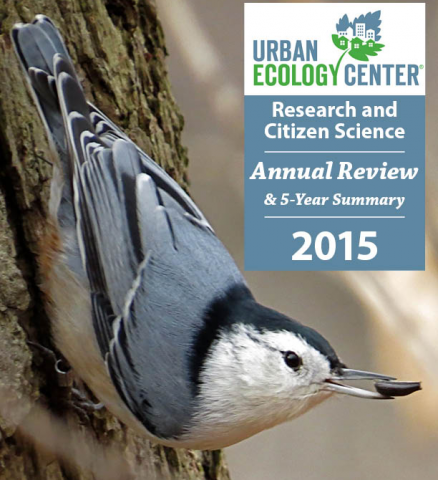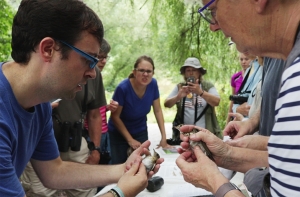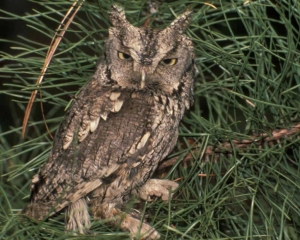
Secret Lives
As I look longingly over the Menomonee Valley river basin currently radiating with spring promise, I am reminded of last week’s bitter rain and our dashed hopes of seeing the season's first Red-winged Blackbird. But spring’s sweet whispers delivered on the high note of a cardinal’s song today again brought hope that spring was still on its way.
But, what if we weren’t driven by hope but by some kind of undeniable intuition or reverberating internal awareness? How does a wild animal adapt during an unpredictable Wisconsin winter?
Once you’ve read Fabre, you’re never alone
I’m not a professional scientist. But animal stories, biographies of scientists and works of natural history have always been my favorite reading material. Since childhood I’ve been nourished by the prose of ones who observe, measure and count; imagine and experiment. I still have natural history books I acquired as a child. One of them is Animal Behavior from the Life Nature Library series. It was published in 1965; presented as an introduction to what the editors of the time called the “infant science” of ethology.
Announcing our Latest College-level Course: Conservation Biology
If you’re familiar with the term lifelong learning, the idea is that the desire to learn about the world remains strong with people who aren’t enrolled in a course at an institution of higher learning. Here at the Center we’ve previously offered college-level courses in Tropical Ecology and Plant Systematics, and now we’re excited to announce a course in Conservation Biology.
A New Inhabitant In Riverside Park
Occasionally the Research and Community Science team has a find so cool that we can’t stop ourselves from sharing it. Back in 2006 I started a mammal monitoring project at Riverside Park to document the park’s population, and recently we recorded the most glorious find I have ever experienced at the UEC!
Research and Community Science Annual Reviews
The Research and Community Science Program contributes important data to the study of urban wildlife. See below for our Annual Reviews of this work. If you'd like to help band birds, tag butterflies, track bats or conduct your own research project, please contact Tim Vargo, Manager of Research and Community Science, at This email address is being protected from spambots. You need JavaScript enabled to view it..
2018
2017-18
2016
2015
2014
2013
2012
2011
Community Science
The Urban Ecology Center's Community Science Program serves as a meaningful bridge between academic research and the community-at-large. The program creates collaborative spaces for research between professional and community scientists and creates a more engaged, knowledgeable and ecologically literate community. The Center maintains a network of urban field stations in which all research is accessible to and advised by both community and professional researchers.
Community members conduct cutting-edge research, from studying the physiology and phenology of migrating birds to discovering the winter quarters of threatened snakes. Community Scientists monitor and research bats, bugs, plants, snakes, turtles, mice, people and a host of other critters!
Support monitoring and research efforts on the unique plants and animals within our parks.

Learn how we study snakes, birds, and other animals living in the greenspaces we manage
Community Science
I’ve always thought it a little strange that one of the most important identifiers we carry—our names—are usually given to us by someone else. Of course we can always choose to go by nicknames, middle names or change names completely.
Michigan: The Sunset Side 2017
Join the Urban Ecology Center for an Eco-travel adventure focused on exploring the sunset side of one of our greatest freshwater resources – Lake Michigan!
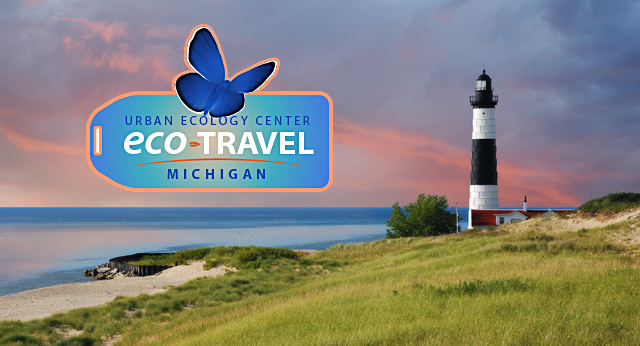 Sunset at Sable Lighthouse in Ludington State Park. Photo: Dan Chrenka
Sunset at Sable Lighthouse in Ludington State Park. Photo: Dan Chrenka
View the sunrise from the deck of the Lake Express ferry as we travel to Muskegon, Michigan to tour the diverse ecosystems, industries, and communities of the state's northwest Lower Peninsula before returning to Wisconsin aboard the National Historic Landmark ferry, the S.S. Badger.
Sights on our jounrey will include:
- The industrial port city of Muskegon
- Ludington State Park's renowned coastal ecosystems
- Huron-Manistee National Forest and the endangered Karner Blue Butterfly habitat
- The motor vehicle-free Main Streets and Gilded Age living of Mackinac Island
- The steep sandy slopes of Sleeping Bear Dunes National Lakeshore.

Discover the surreal, wind-swept topography of Sleeping Bear Dunes. Photo: Bailiwick Studios
When: Saturday, August 19th through Friday, August 25th, 2017
Cost: $1,800 per person ($2,325 for single occupancy room)
Includes:
- 7 day trip exploring the sunset side of Lake Michigan
- 3 ferries on Lake Michigan (technically one is also on Lake Huron)
- 6 nights of hotel accommodations (double occupancy)
- 7 days of breakfasts, lunches, and dinners (or Per Diem allowance)
- Entrance fees to State Park, National Forest, National Lakeshore, and museums
- Urban Ecology Center transportation throughout
- Charming Urban Ecology Center guides who will worry about planning all the details—from guided excursions to getting you to historic Main Streets with time to explore on your own
- Support for the Urban Ecology Center’s mission
Does not include: Alcohol and optional activities, such as during free time to explore Ludington State Park and Mackinac Island (e.g., carriage rides, bike rentals, high tea, additional tours).
A $500 mostly refundable deposit reserves a spot on the trip.
To learn more or to sign up, please contact This email address is being protected from spambots. You need JavaScript enabled to view it..

Visit the habitat of the endangered Karner Blue Butterfly (Lycaeides melissa samuelis) in Huron-Manistee National Forest.

Explore the preserved Victorian architecture of Mackinac Island. Photo: Brandon Bartoszek
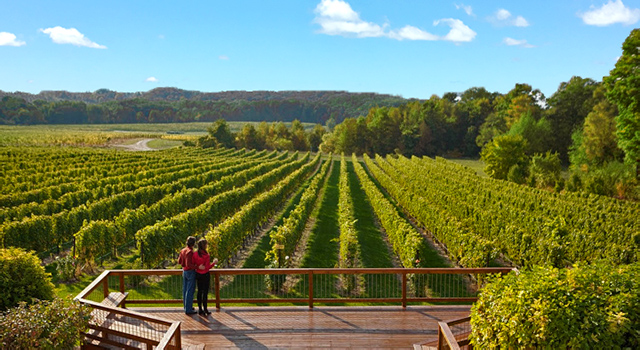 Tour Michigan's oldest winery, the Grand Chateau Traverse during our visit to Traverse City.
Tour Michigan's oldest winery, the Grand Chateau Traverse during our visit to Traverse City.
Native Animal of the Month: Eastern Screech Owl
Last fall at Riverside Park, the research and community science department was hosting the Wisconsin DNR’s bat biologists for an evening of bat mist netting, when a gregarious little screech owl paid us a visit. As DNR biologist Paul White held the large group of participants enraptured with a live bat, a persistent whinny in the distance distracted those of us at the back of the group.
Phenology
Phenology is the study of how plants and animals are affected by the annual cycles of nature.
Since many of nature’s most interesting events can be linked to the weather, and predictable fluctuations in temperature, air pressure, and daylight prompt many plants and animals to change their behaviors and sometimes even their appearance. Since every species has its purpose, place and season, phenology can help us appreciate and understand a species’ role in its habitat.
By tracking these phenology occurrences, we can begin to understand how events and species are inter-related and help piece together the fascinating mosaic of the seasons.
Copyright © 2023 The Urban Ecology Center








